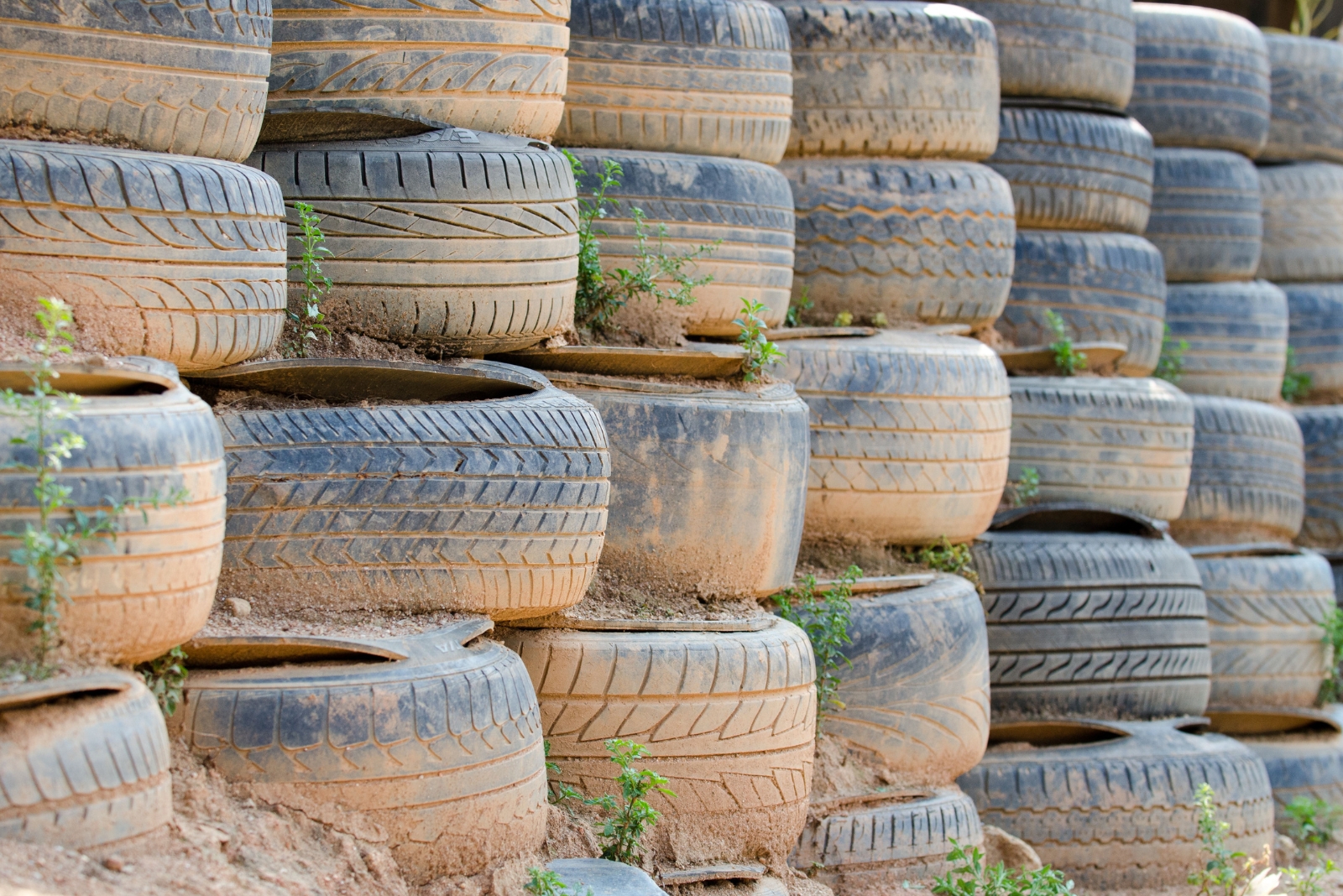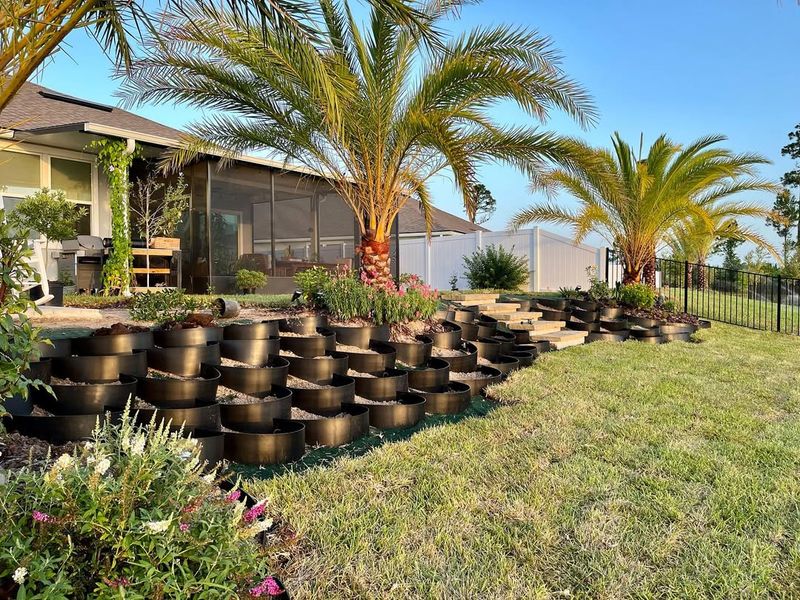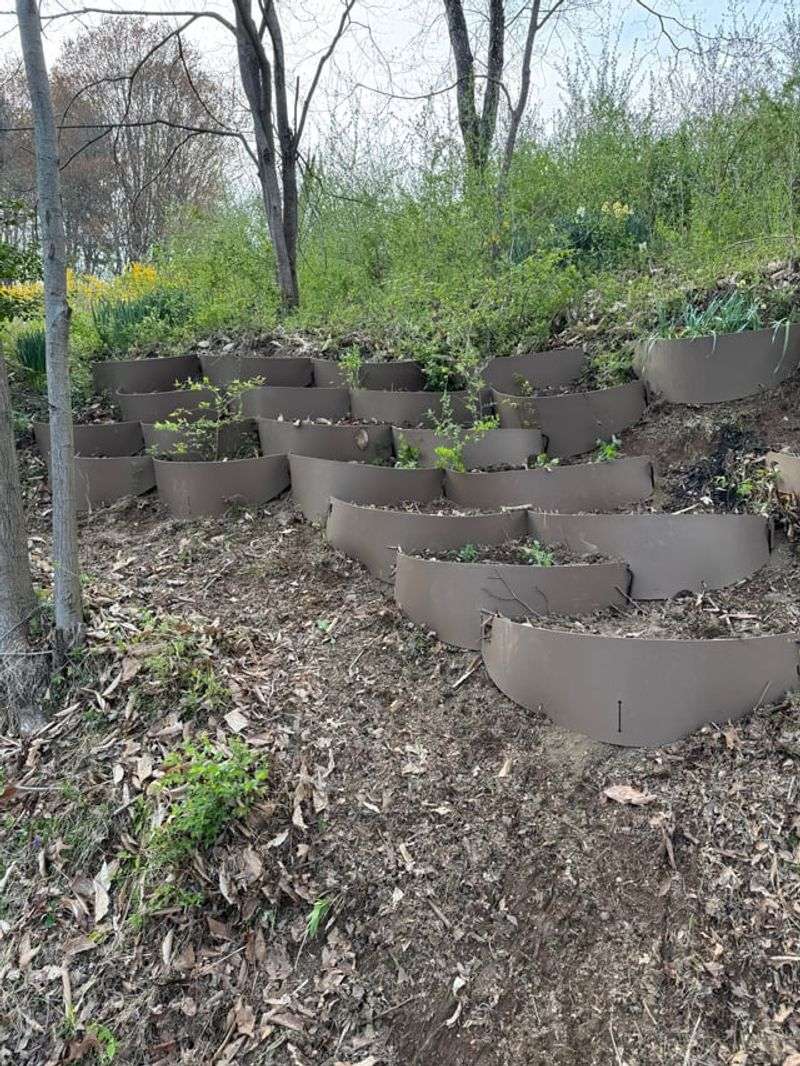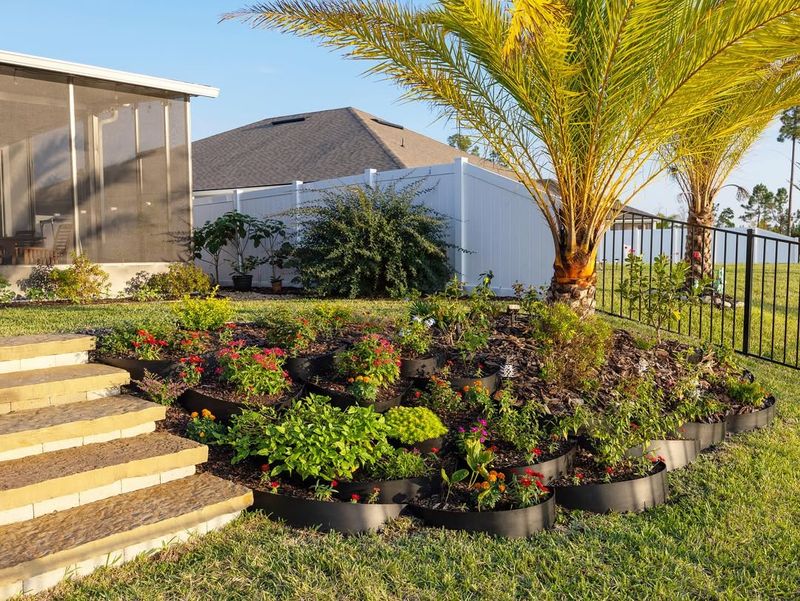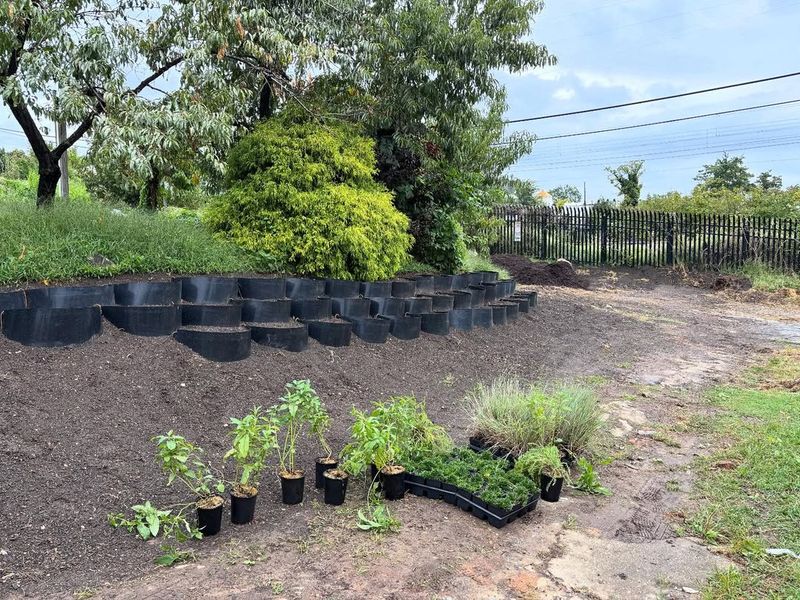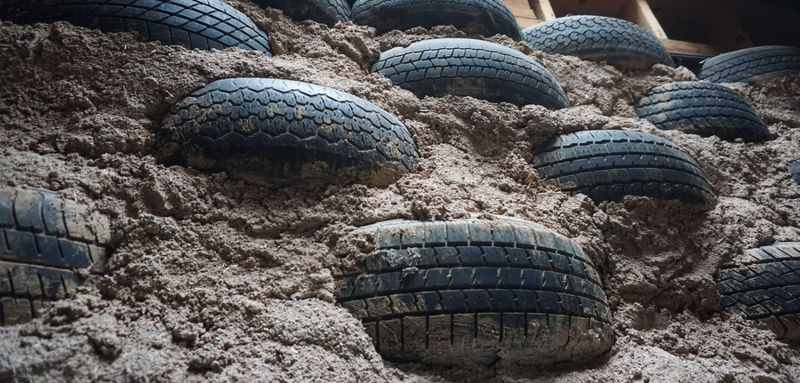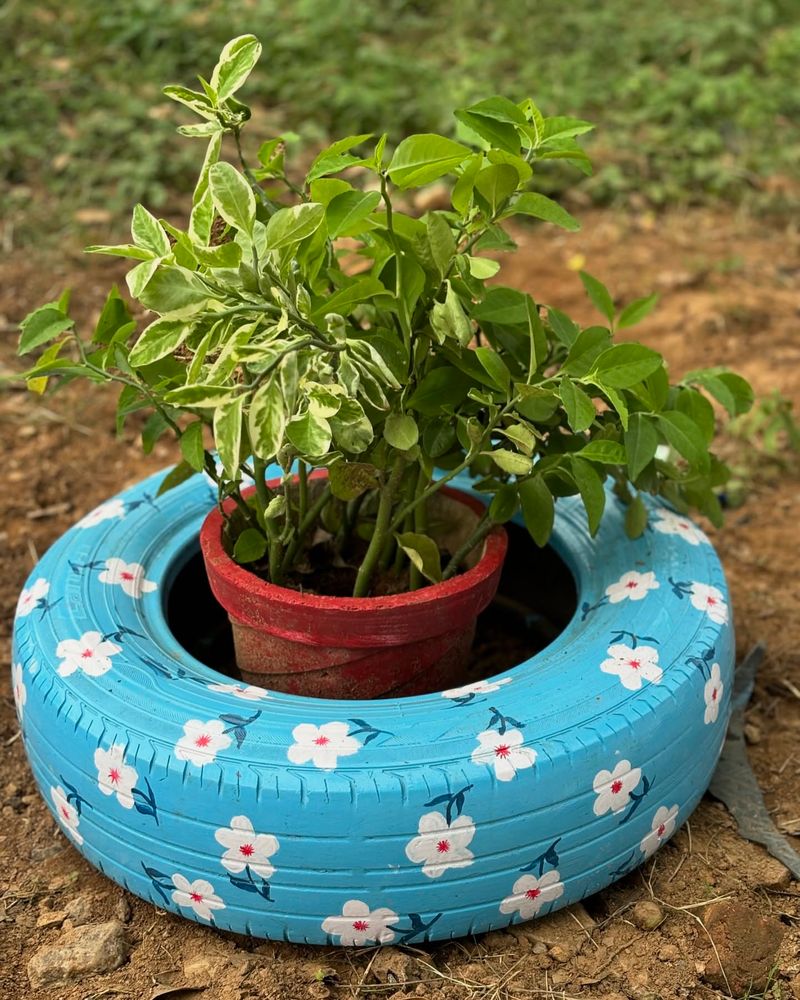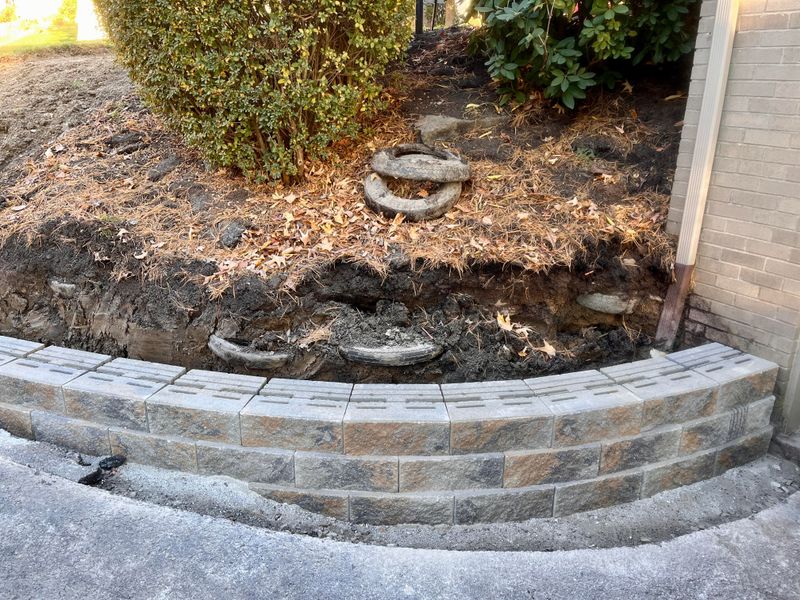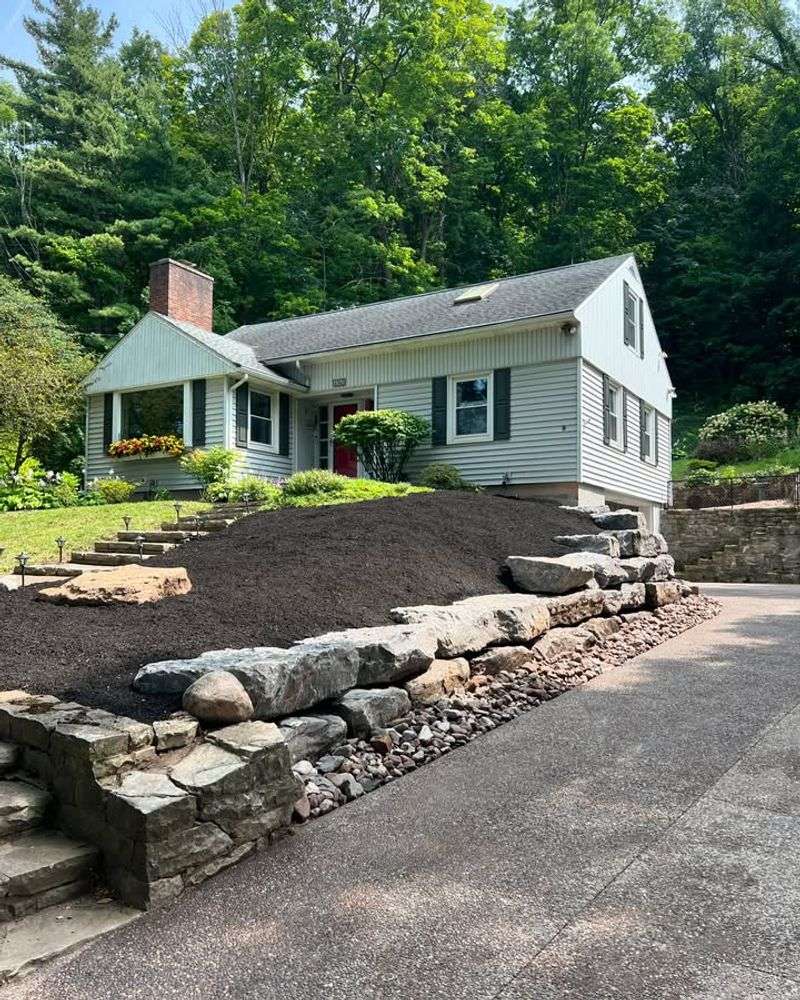Old tires don’t have to end up in landfills when they can become something useful right in your backyard. Building retaining walls from recycled tires is a smart, eco-friendly solution that works especially well in Texas where the soil and weather can make traditional walls expensive.
Whether you’re dealing with erosion or just want to level out your yard, tire retaining walls offer durability and creativity at a fraction of the cost.
1. Stacked And Filled Traditional Tire Wall
Building a wall by stacking tires and filling them with compacted soil creates incredible strength and stability. Each tire acts like a giant puzzle piece, locking into place as the weight increases.
Start your first row by placing tires side by side, then fill each one completely with dirt or gravel. Pack it down firmly to eliminate air pockets.
For the second layer, offset the tires like bricks so they overlap the gaps below. Keep adding layers until you reach your desired height, and you’ll have a wall that can hold back tons of soil.
2. Rebar-Secured Vertical Tire System
Driving rebar through the center of tires adds extra anchoring power that regular stacking can’t match. Metal stakes keep everything locked in position even during heavy Texas rainstorms.
Begin by hammering long rebar pieces deep into the ground where your wall will stand. Slide tires down over the rebar, stacking them vertically while filling each with compacted material.
The rebar prevents shifting and adds years to your wall’s lifespan. You can paint the exposed tire edges to match your landscape or leave them black for an industrial look that many Texans appreciate.
3. Half-Tire Terraced Garden Wall
Cutting tires in half opens up creative possibilities for building attractive terraced walls that double as planters. A reciprocating saw makes quick work of slicing through rubber.
Arrange the half-circles in stepped patterns along your slope, securing each piece with landscape stakes or buried edges. Fill the curved sections with quality soil and add flowers or vegetables.
This method works beautifully for gentle slopes where you want function and beauty combined. The terraced design prevents water runoff while creating multiple planting zones that make your yard look professionally landscaped without the hefty price tag.
4. Tire And Timber Hybrid Wall
Combining tires with wooden timbers creates a wall that’s stronger than either material alone. Wood adds rigidity while tires provide flexibility and drainage.
Lay down a row of tires filled with gravel, then place treated timber planks across the top. Add another tire layer, offset from the first, and repeat the timber placement.
The wood helps distribute weight evenly and gives you flat surfaces for additional landscaping features. In Texas heat, the rubber protects wood from ground moisture while the timber prevents tires from warping. Together they create a retaining system that handles both drought and downpour.
5. Concrete-Filled Tire Block Wall
Pouring concrete into tires transforms them into heavyweight blocks that rival professional masonry. Each tire becomes a solid anchor point capable of holding back serious earth pressure.
Mix concrete according to package directions and fill tires completely, smoothing the top surface flat. Let them cure for several days before moving them into position.
Stack these concrete-filled tires like building blocks, using construction adhesive between layers for added security. The combination of rubber flexibility and concrete strength makes this method ideal for steep Texas hillsides where erosion threatens property. You’ll never worry about wall failure again.
6. Painted Decorative Tire Wall
Who says retaining walls have to look boring? Painting tires with exterior latex paint turns functional structures into backyard art that reflects your personality.
Build your tire wall using any stacking method, then clean the rubber surfaces thoroughly. Apply primer designed for rubber, followed by two coats of weather-resistant outdoor paint in your chosen colors.
Bright southwestern hues work beautifully in Texas landscapes, or try earth tones for a natural appearance. Kids love helping paint these walls, and the finished product becomes a conversation starter. The paint also protects rubber from UV damage, extending your wall’s life considerably.
7. Geo-Grid Reinforced Tire Wall
Adding geo-grid fabric between tire layers creates engineering-grade strength that professionals use for major projects. The synthetic mesh distributes weight and prevents soil movement behind the wall.
Roll out geo-grid fabric over each tire layer before adding the next row, extending the fabric back into the hillside several feet. Cover with soil and compact thoroughly.
Stack your next tire row on top and repeat the process. This method meets building codes in many Texas counties for walls up to eight feet tall. The fabric costs little but adds tremendous holding power that keeps slopes stable through years of weather extremes.
8. Drainage-Enhanced Tire Wall System
Proper drainage determines whether your tire wall lasts five years or fifty. Water pressure building up behind walls causes most failures, but smart design prevents this problem completely.
As you stack tires, place perforated drainage pipe along the base behind the wall, sloping it to direct water away. Fill the space between tires and hillside with gravel rather than soil.
Drill drainage holes through the lower tire rows to let water escape forward. The gravel allows water to flow down to the drainage pipe while the holes prevent pressure buildup. Texas thunderstorms won’t stand a chance against this system.

